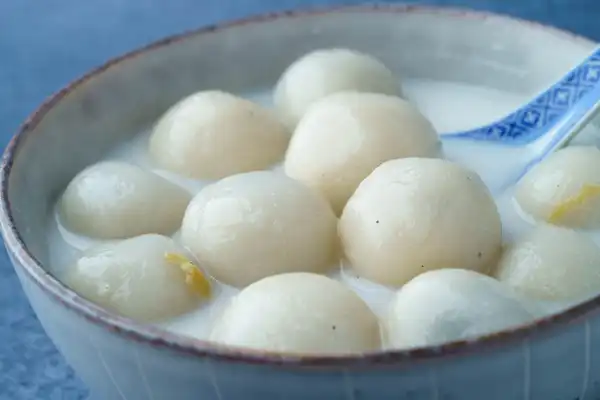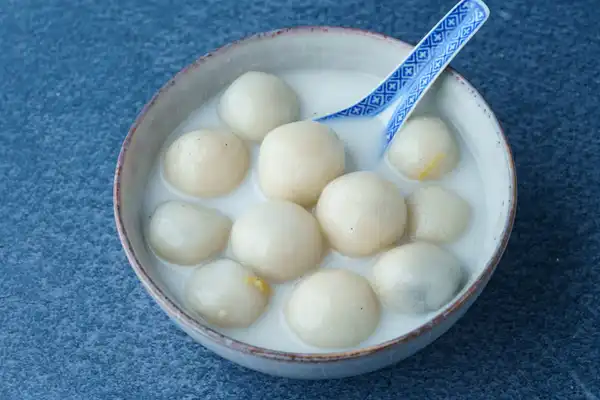Tong jyun for the holidays
Tong jyun, or tang yuan, is a traditional dessert for the Lantern Festival, which is the 15th and final day of the Chinese New Year celebration. The round shape of the tong jyun balls mimics the roundness of the full moon on this day.
Tong jyun always brings up an important Chinese saying, 團團圓圓 (tyun tyun jyun jyun), because of the character 圓 jyun, which means round. The auspicious saying refers to the togetherness and completeness of a family, and evokes the imagery of a whole, complete family being together at a round dinner table, happily enjoying a meal, especially during holiday reunions.
Thankfully, it's not limited to holidays any longer! This simple dessert is enjoyed all year round.
Now, as a dessert, tong jyun is world-famous, but if you'd like to try tong jyun as a savory main course, that's actually a Toisanese regional specialty. Our family's tried-and-true recipe for it is right here. Check it out!
Tong jyun or tang yuan?
You might see the name of this dish written as tang yuan. Tong jyun is the pronunciation in the Cantonese language, and tang yuan is what you'd call it in Mandarin. Don't worry, it's the same thing.
Thank you, CantoMando!
This recipe is brought to you in part by CantoMando. They’re a YouTube channel created by three friends- Edward, Mike, and Sheldon. They make amazingly funny, thought provoking, and positive content. We’re so thankful to be part of this cool community where we can learn about our cultures and languages! Check out their new class, Canto to Mando Blueprint!
During our team meetings, we share our goals, and we always hear from each other that we want to learn more Mandarin, but as Cantonese speakers, we don’t know where to start since most classes are made for people who have zero Chinese background.
But this new program by CantoMando teaches you how to use your existing Cantonese background to get speaking conversationally fluent Mandarin super fast! If you’re in the same boat as us, you can learn more about the program and follow them on social media here:
Check out a quick story summary of our recipe!



